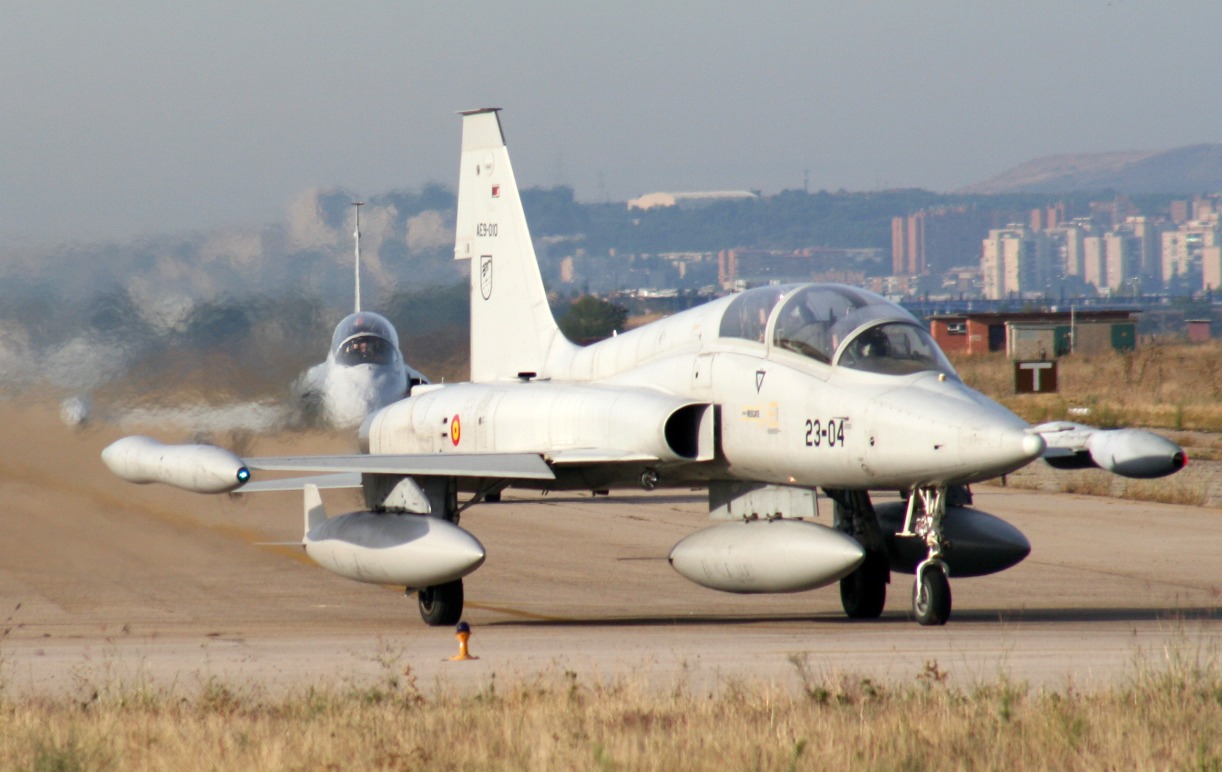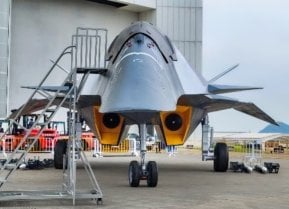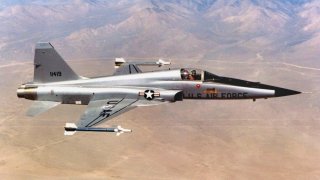Russia's MiG-28 Fighter from Top Gun Explained in 3 Words
In the 1986 film "Top Gun," the fictional MiG-28 adversary aircraft was actually portrayed by a black-painted Northrop F-5, adorned with a red-star insignia to represent a Cold War enemy. The F-5 was unique in that it was privately funded by Northrop without an initial government contract.
A Real Fighter: In the 1986 film "Top Gun," the fictional MiG-28 adversary aircraft was actually portrayed by a black-painted Northrop F-5, adorned with a red-star insignia to represent a Cold War enemy. The F-5 was unique in that it was privately funded by Northrop without an initial government contract.

-Designed as a low-cost, high-performance fighter, it excelled in both air superiority and ground attack roles. The aircraft could climb at 34,500 feet per minute and reach a service ceiling of 51,800 feet in about 90 seconds, with a top speed of Mach 1.63. Armed with two 20mm M39A2 cannons and seven hardpoints for additional weapons, the F-5 served primarily in aggressor squadrons for the U.S. Air Force.
-It also became the basis for the T-38 Talon, the world's most produced supersonic trainer used to train generations of pilots.
The Real Story Behind Top Gun's MiG-28: Meet the Northrop F-5
Top Gun (1986) is a movie loaded with iconic dialogue, iconic scenes, and iconic aircraft.
One of the film’s most memorable exchanges comes from a training seminar in which Charlie, a civilian contractor, briefs the Top Gun class on an aircraft, the MiG-28, that was invented for the movie.
“Now, then, as most of you know, the F-5 doesn’t have the thrust-to-weight ratio that the MiG-28 has. And it doesn’t bleed energy below 300 knots like the MiG-28. However, the MiG-28 does have a problem with inverted flight tanks. It won’t do a negative-g push over,” Charlie explains. “The latest intelligence tells us that the most it will do is one negative…”
Charlie stops, because two of her students, Goose and Maverick, are having a disruptive, whispered discussion. “Excuse me, lieutenant, is there something wrong?”
Maverick explains that the intelligence on the MiG-28 is inaccurate. “We happened to see a MiG-28 do a 4g negative dive.”

Of course, the flight parameters of the MiG-28 are pure fiction, because the MiG-28 is pure fiction. Yet unlike in the Top Gun sequel, where adversary aircraft resembling Su-57s (referred to vaguely as “fifth-generation fighters” in the film) were depicted with CGI renditions, the MiG-28 is depicted using a real aircraft boosted by special effects.
To create the fictional MiG-28, the Top Gun team took a Northrop F-5 and painted the thing black with a red-star insignia that was meant to convey some foreign Communist threat of the mid-80s – presumably the Soviet Union, or perhaps North Korea.
Let’s take a closer look at the F-5, the real MiG-28.
Introducing the F-5
The F-5 is odd in that the project was privately funded. Northrop, aiming to design a low-cost, low-maintenance fighter with high performance, set about building the F-5 without a government contract in place. Northrop’s gambit resulted in a small and simple aircraft that was capable in an air superiority role, yet could be used for ground attack, too.
The F-5 was nimble and sleek, capable of climbing at speeds of 34,500 feet per minute and reaching its 51,800-foot service ceiling in just about 90 seconds. In addition to an impressive climb rate, the F-5 had a respectable top speed of Mach 1.63, but a range limited to just 554 miles.

For weapons, the F-5 carried two 20 mm M39A2 Revolver cannons, plus seven hard points for missiles, rockets, and bombs.
While the F-5 does not have a particularly notable service history with the U.S. Air Force – it has mostly been used in aggressor squadrons – the aircraft did serve as the basis for the storied T-38 Talon, which holds the distinction as the world’s most highly produced supersonic trainer. The T-38 has been used to train successive generations of Air Force pilots, many of whom likely signed up in the first place thanks to the F-14 v. MiG-28 sequences in Top Gun.
About the Author: Harrison Kass
Harrison Kass is a defense and national security writer with over 1,000 total pieces on issues involving global affairs. An attorney, pilot, guitarist, and minor pro hockey player, Harrison joined the US Air Force as a Pilot Trainee but was medically discharged. Harrison holds a BA from Lake Forest College, a JD from the University of Oregon, and an MA from New York University. Harrison listens to Dokken.
Image Credit: Creative Commons.


